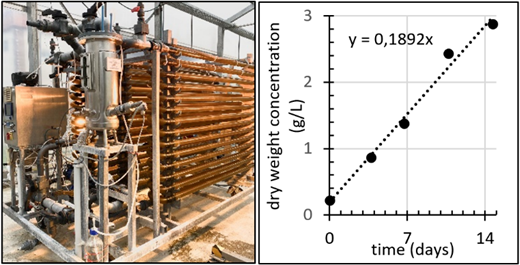Algas as new raw materials for biorefinery
Work Package 1 (WP1) is focused on optimizing the cultivation and harvesting parameters for both microalgae and macroalgae. The project partners—A4F, IGV, Roquette, and CEVA—have evaluated these parameters to achieve high yields of biomass and the desired microalgae ingredients. These ingredients are then recovered at each partner’s dedicated biorefinery.
The findings have revealed significant variations in yield and biomass composition, especially for Dunaliella salina and Phaeodactylum tricornutum. Side streams were generated from five different microalgae species, all showing promising compositions. The data from biomass cultivation and biorefinery processes are being utilized to develop the CIRCALGAE business case in Work Package 5 (WP5), which will highlight the most promising algae, products, and processing routes.
For macroalgae, the project involves seasonal and regional characterization of four commercially relevant species, focusing on their composition and the use of side streams from conventional seaweed industry processes. Periodic samples of cultivated Saccharina latissima (NSF) and Gracilaria spp. (HISP, CEAM) have been provided, and compositional changes are being analyzed by IATA-CSIC. Additionally, Laminaria hyperborea and Ascophyllum nodosum, harvested from three different regions by Alginor, are also being analyzed by IATA-CSIC. This full characterization process is ongoing.
Side stream samples from both microalgae and macroalgae are sent to IATA-CSIC and Chalmers for detailed characterization and further processing into new products as part of Work Packages 2 (WP2) and 3 (WP3). These efforts aim to enhance the value of the full utilization business case evaluated in WP5.

Upscaling of Phaeodactylum tricornutum cultivation at IGV. Artificial light allowed fast growth at semi-pilot scale in low salinity medium.